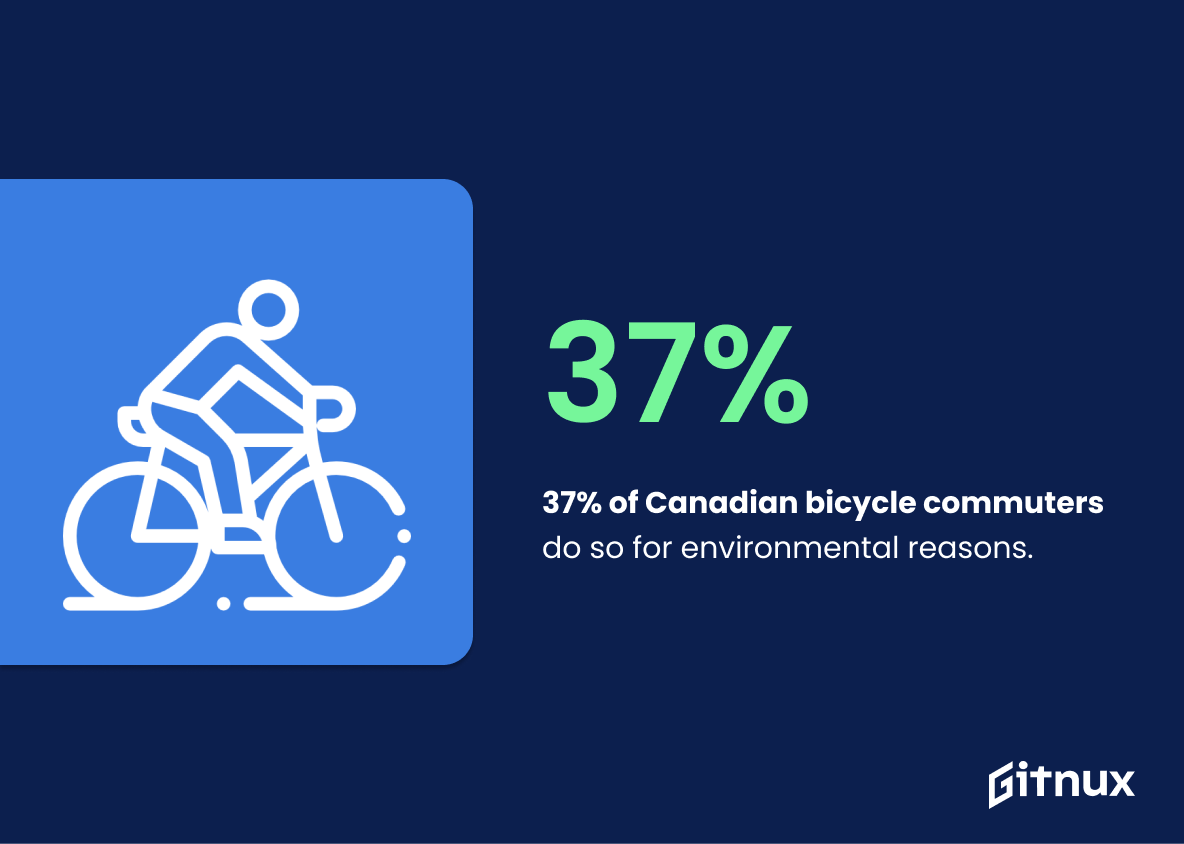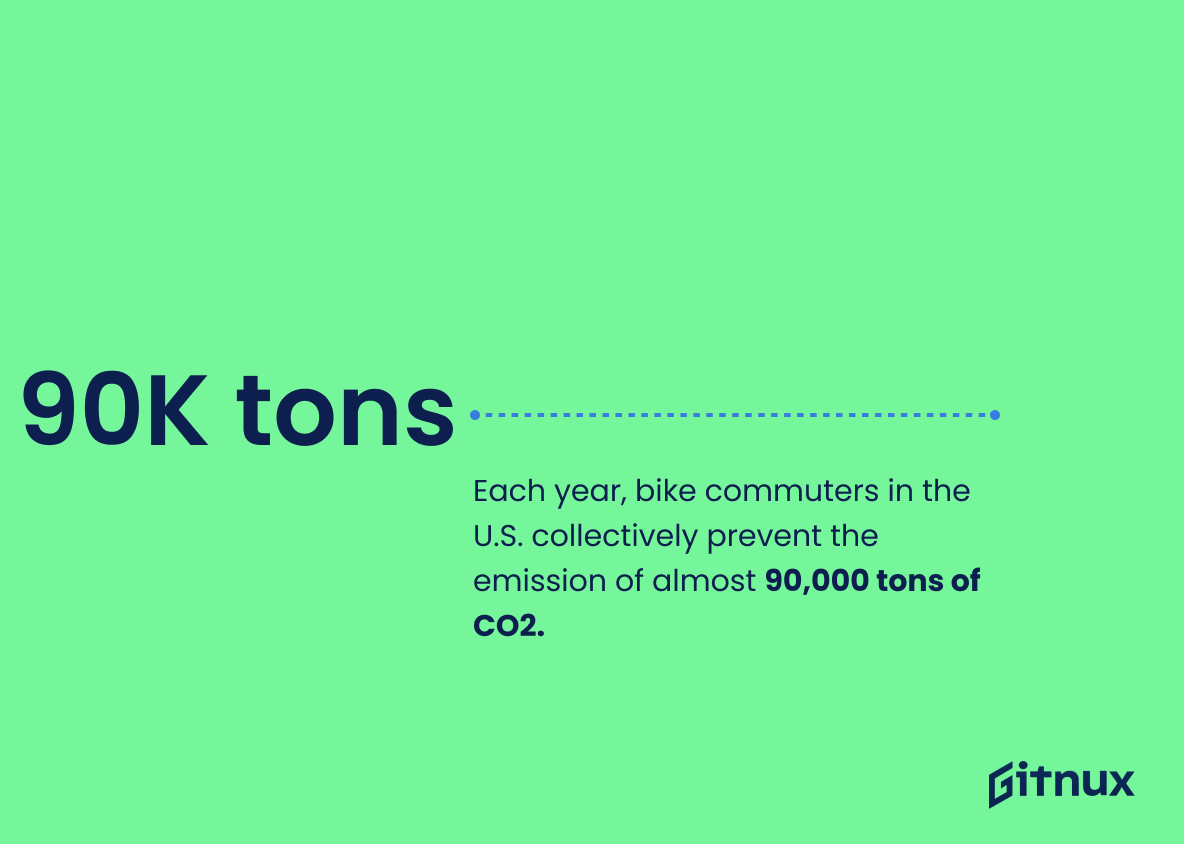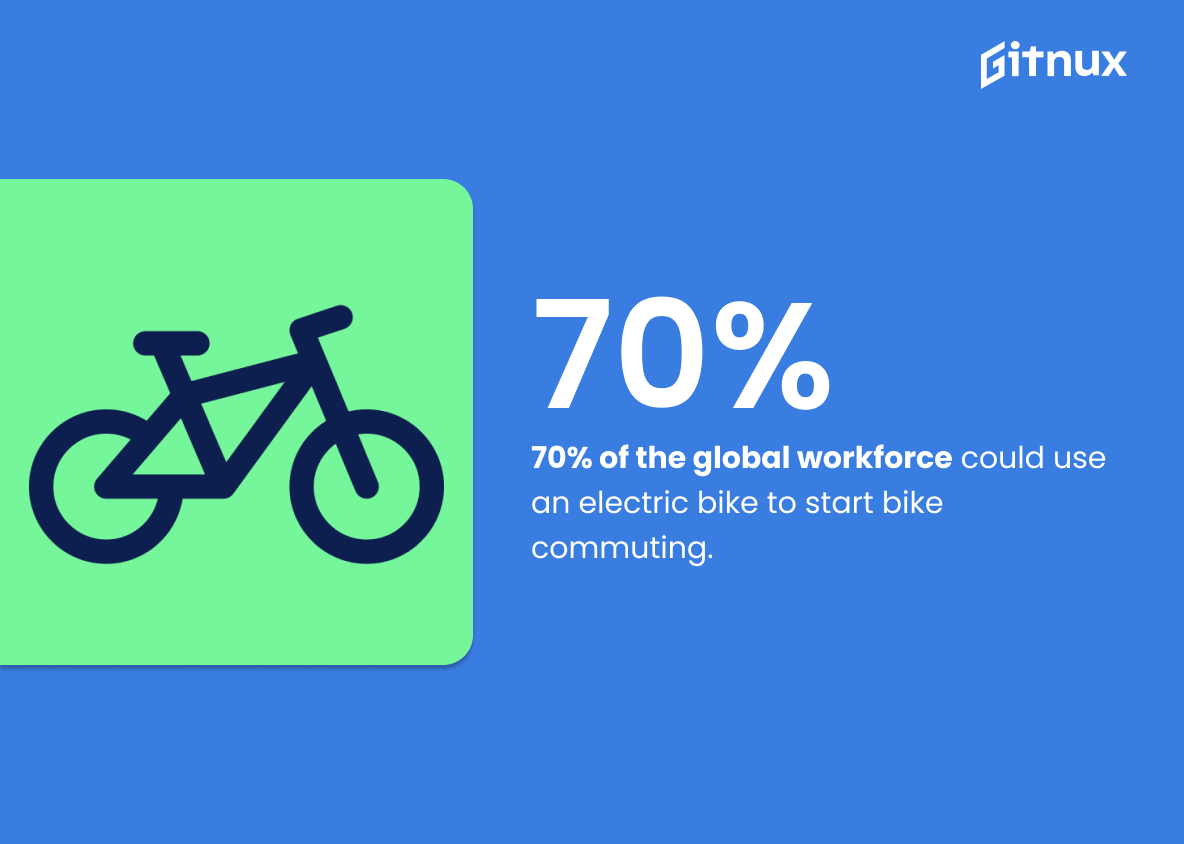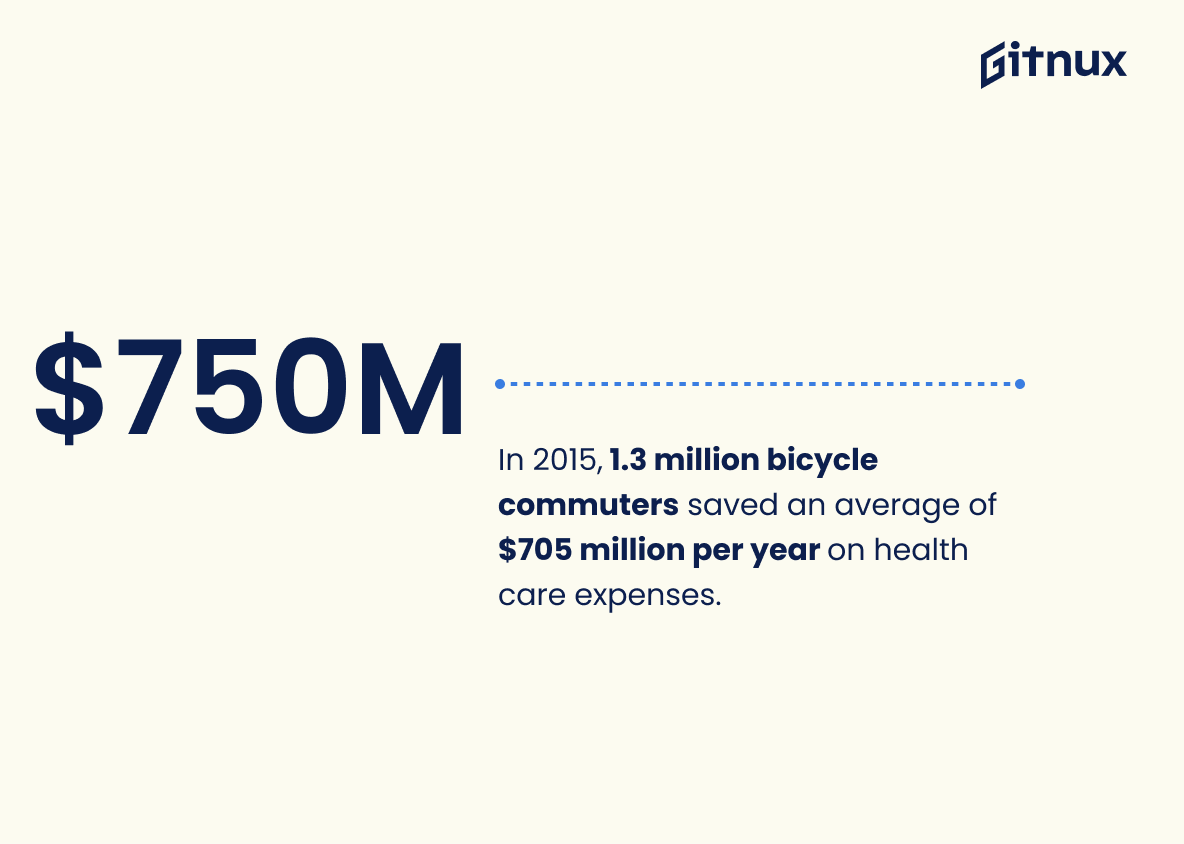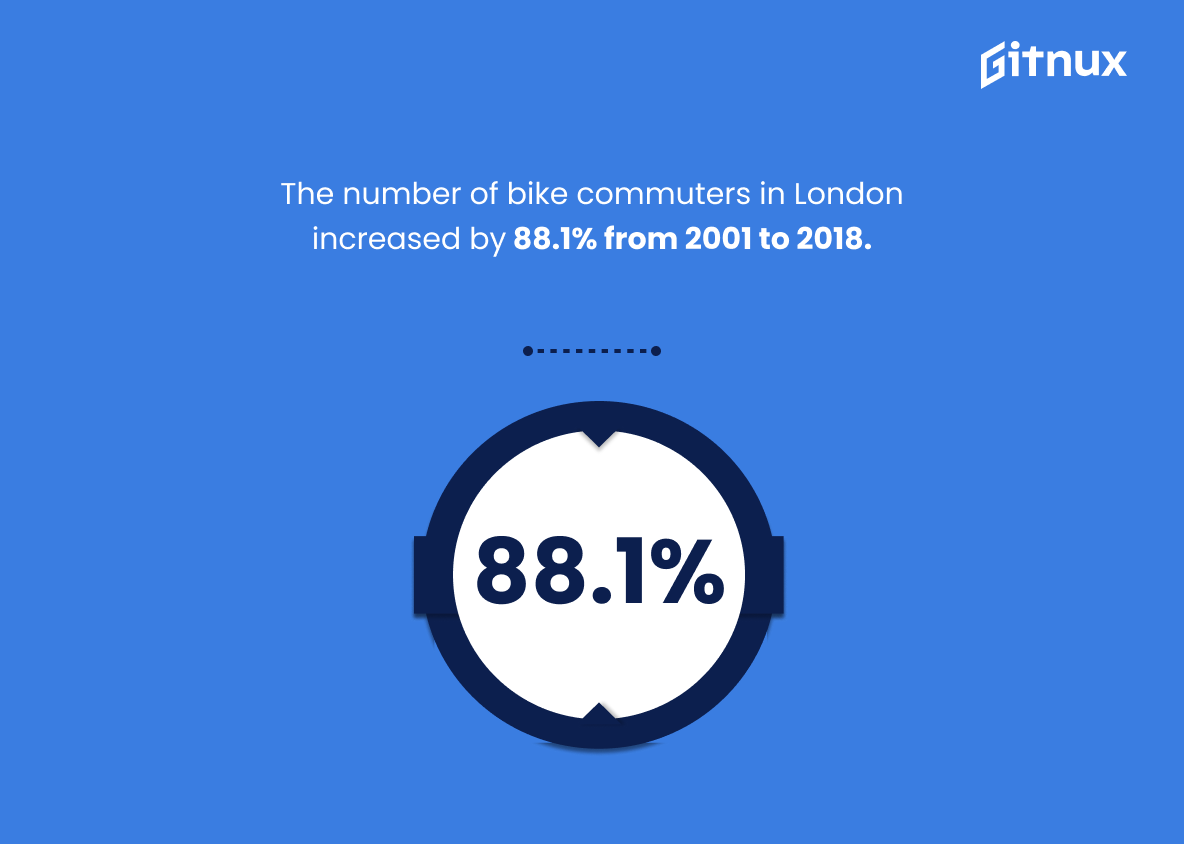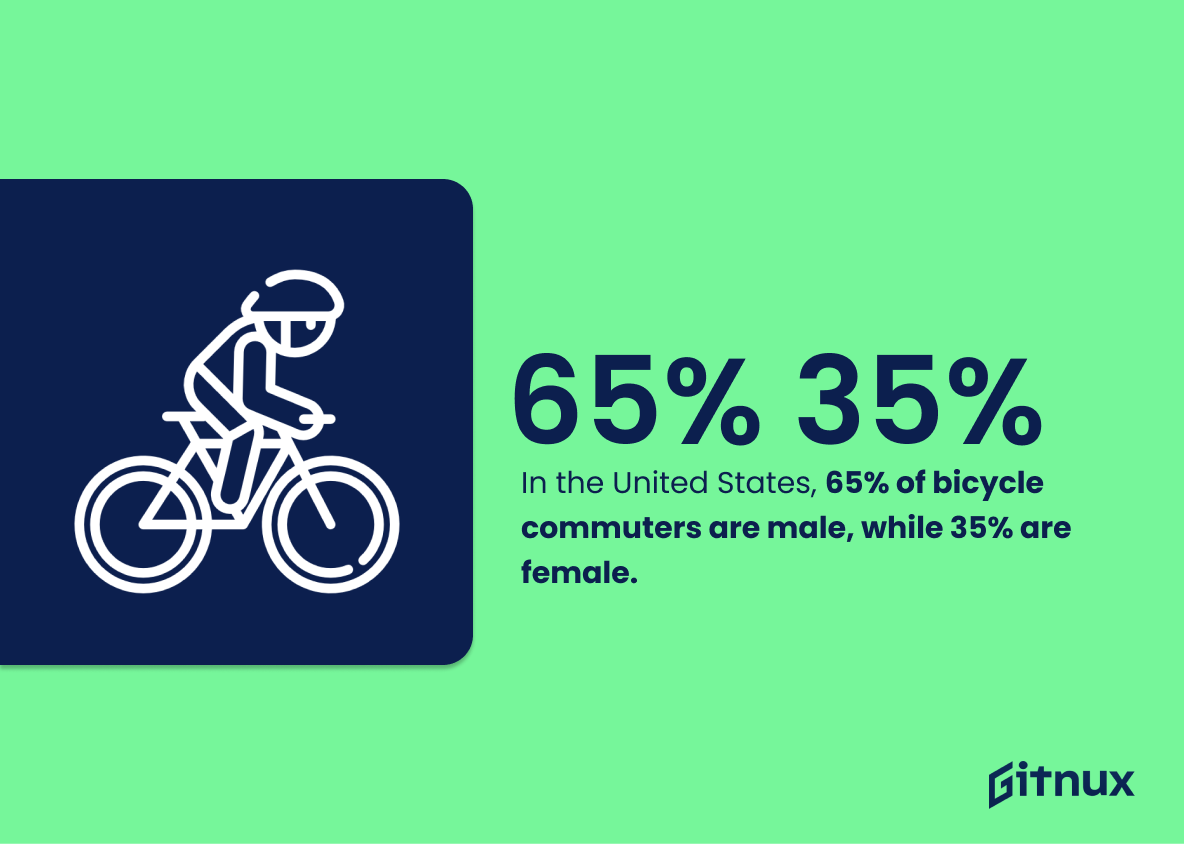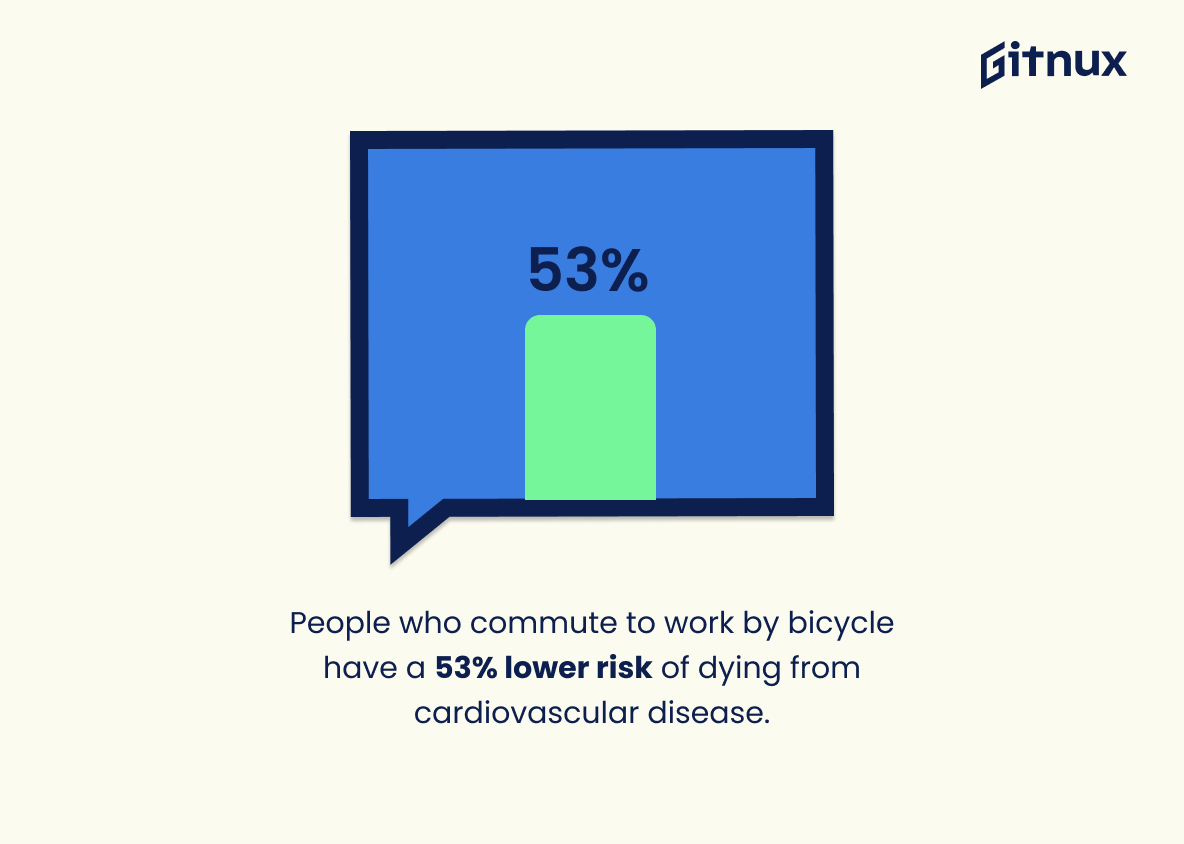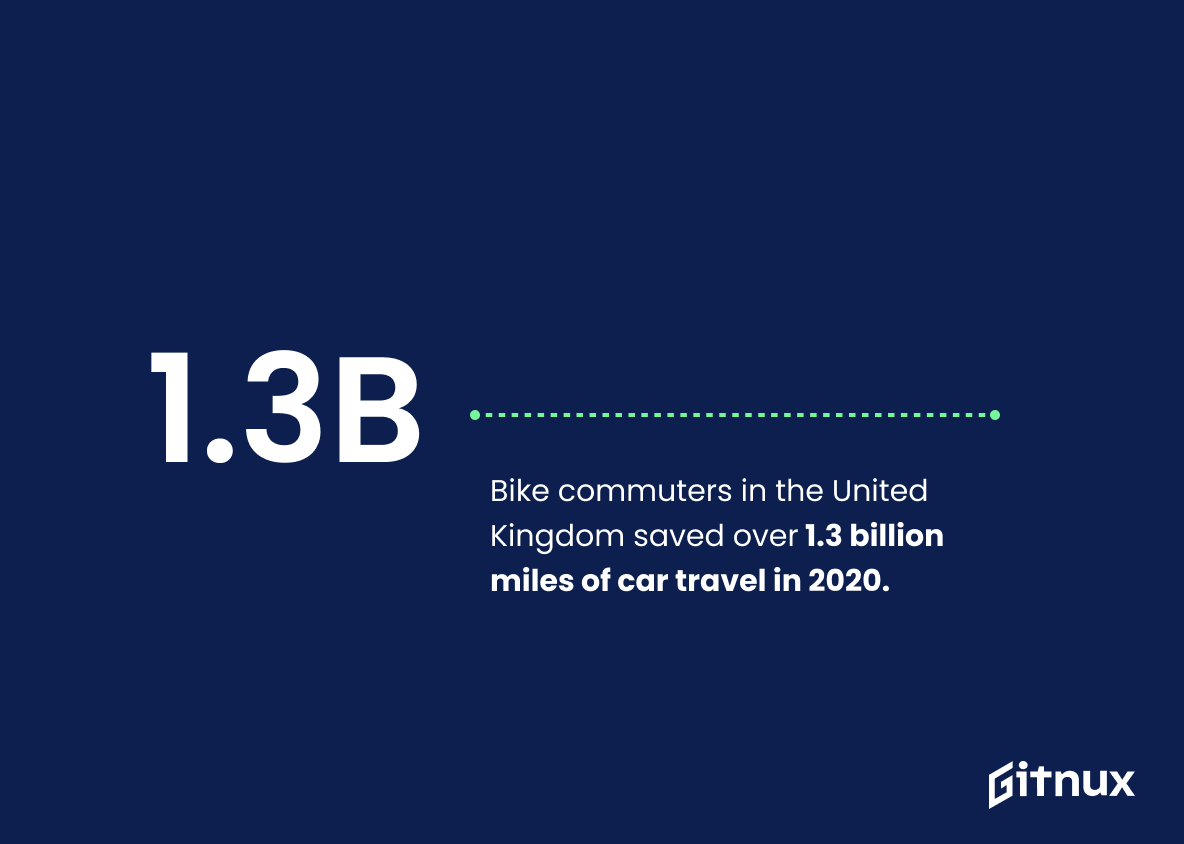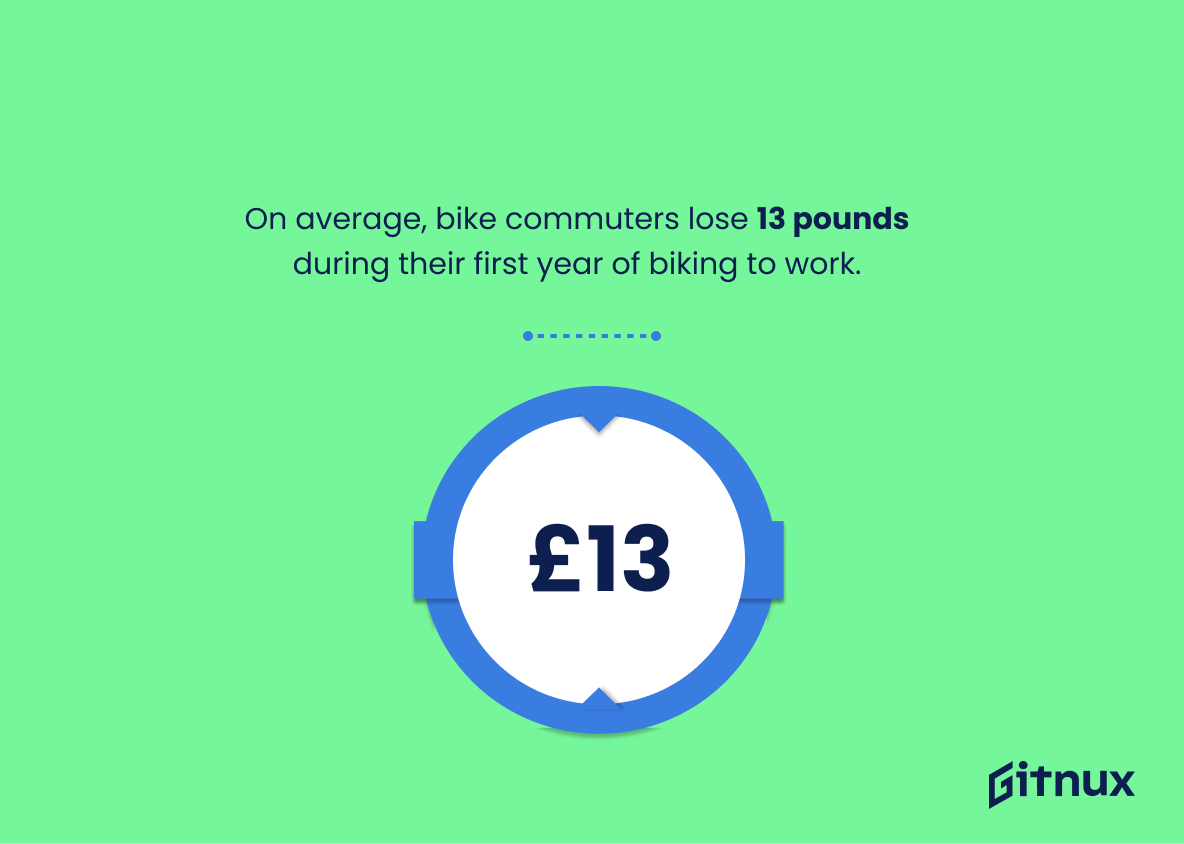The bicycle has long been a popular form of transportation, but in recent years it has seen an even greater surge in popularity. This is especially true during the COVID-19 pandemic, when 43% of bicycle commuters indicated that they started bicycling to work due to the virus. In 2018, 0.6% of all commuters traveled to work by bike in the United States and this number has increased by 60% over the past decade. Berkeley, California had 9.7%, making it one of highest percentage cities for bike commuting in America while 37% Canadian cyclists cited environmental reasons as their motivation for biking to work. The Netherlands boasts 40% trips made on bicycles each year and U.S.-based bikers collectively prevent 90 thousand tons of carbon dioxide from entering our atmosphere annually. Copenhagen leads with 62%, followed closely by Germany at 2 million regular riders; both countries have experienced significant growth since 2001/2007 respectively – 88 percent increase for Londoners alone.
In terms of demographics 65 percent are male while 35 percent female; health benefits include lower mortality rate (41%) and average weight loss 13 pounds within first year plus 1 billion miles saved car travel 2020 UK only – not forgetting 4 billion Euros worth health benefits Europe 2019 too. So why wait? Get out there today and join millions around world who already enjoy cycling commute daily – you won’t regret it.
This statistic is a telling indication of the current state of bike commuting in the United States. It shows that while bike commuting is on the rise, it still has a long way to go before it becomes a mainstream form of transportation. This statistic serves as a reminder that there is still much work to be done in order to make bike commuting a viable option for more people.
In 2018, the city with the highest percentage of bicycle commuters in the U.S. was Berkeley, California, at 9.7%.
This statistic is a testament to the success of Berkeley, California in promoting bike commuting. It shows that the city has been able to create an environment that encourages people to use bicycles as a form of transportation. This statistic is a great example of how cities can create a culture of bike commuting and should be highlighted in a blog post about bike commuting statistics.
Bike Commuting Statistics Overview
37% of Canadian bicycle commuters do so for environmental reasons.
This statistic is a powerful reminder of the positive environmental impact that bike commuting can have. It highlights the fact that by choosing to bike to work, Canadians are actively contributing to a healthier planet. This statistic is a great starting point for a blog post about bike commuting statistics, as it can be used to illustrate the potential of bike commuting to reduce emissions and improve air quality.
40% of all trips in the Netherlands are made by bicycle.
This statistic is a testament to the Netherlands’ commitment to cycling as a form of transportation. It highlights the country’s dedication to promoting a healthy, sustainable lifestyle and reducing its carbon footprint. It also serves as an example to other countries of the potential benefits of investing in cycling infrastructure and encouraging citizens to use bicycles for their daily commutes. This statistic is an important reminder of the importance of bike commuting and its potential to improve public health and reduce environmental impact.
Each year, bike commuters in the U.S. collectively prevent the emission of almost 90,000 tons of CO2.
This statistic is a powerful reminder of the positive environmental impact of bike commuting. By collectively preventing the emission of almost 90,000 tons of CO2 each year, bike commuters in the U.S. are making a significant contribution to reducing the amount of greenhouse gases in the atmosphere.
Copenhagen, Denmark, boasts 62% of its residents commuting by bike daily.
The fact that Copenhagen, Denmark, has such a high percentage of its residents commuting by bike daily is a testament to the city’s commitment to sustainable transportation. It is a shining example of how cities can prioritize bike commuting and create a healthier, more environmentally friendly atmosphere. This statistic is a powerful reminder of the potential for bike commuting to make a positive impact on our cities and our planet.
In 2017, there were 864,000 bike commuters in the United States.
This statistic is a powerful indicator of the growing popularity of bike commuting in the United States. It shows that more and more people are choosing to use bicycles as their primary mode of transportation, which is great news for the environment and public health. It also demonstrates the potential for bike commuting to become a more mainstream form of transportation, which could lead to more bike-friendly infrastructure and policies.
70% of the global workforce could use an electric bike to start bike commuting.
This statistic is a powerful indicator of the potential for bike commuting to become a more widespread form of transportation. It suggests that the majority of the global workforce could easily take advantage of the benefits of bike commuting, such as improved health, reduced emissions, and cost savings. This statistic is a strong argument for encouraging more people to consider bike commuting as an option.
On average, people who commute by bike are healthier and live longer, with a lower mortality rate of 41%.
This statistic is a powerful testament to the positive impact of bike commuting on health and longevity. It shows that those who choose to commute by bike are reaping the rewards of improved physical and mental wellbeing, with a significantly lower mortality rate than those who don’t. This is an important statistic to consider when discussing the benefits of bike commuting, and it serves as a reminder of the importance of making healthy lifestyle choices.
In 2015, 1.3 million bicycle commuters saved an average of $705 million per year on health care expenses.
This statistic is a powerful reminder of the financial benefits of bike commuting. Not only does it provide an environmentally friendly way to get around, but it also helps to save money on health care expenses. This is an important point to consider when discussing the advantages of bike commuting, as it demonstrates the tangible benefits of this form of transportation.
The largest number of bike commuters in the United States are between the ages of 18 and 34.
This statistic is significant in the context of bike commuting statistics because it highlights the fact that the majority of bike commuters in the United States are young adults. This indicates that bike commuting is becoming increasingly popular among this age group, which could be due to a variety of factors such as environmental awareness, cost savings, or health benefits. This trend could be an indication of a larger shift towards bike commuting as a viable transportation option, which could have a positive impact on the environment and public health.
The number of bike commuters in London increased by 88.1% from 2001 to 2018.
This statistic is a testament to the growing popularity of bike commuting in London. It shows that more and more people are choosing to use bicycles as their primary mode of transportation, which is great news for the environment and public health. The 88.1% increase in bike commuters over the past 17 years is a clear indication that bike commuting is becoming increasingly popular and is here to stay.
In the United States, 65% of bicycle commuters are male, while 35% are female.
This statistic is significant in the context of bike commuting statistics because it highlights the gender disparity in the cycling community. It demonstrates that the majority of bike commuters are male, while female cyclists are significantly underrepresented. This is an important issue to address, as it can help to create a more equitable and inclusive cycling culture.
People who commute to work by bicycle have a 53% lower risk of dying from cardiovascular disease.
This statistic is a powerful reminder of the potential health benefits of bike commuting. It highlights the fact that cycling to work can be an effective way to reduce the risk of cardiovascular disease, a major cause of death in many countries. This is an important point to make in a blog post about bike commuting statistics, as it can encourage more people to consider cycling as a viable commuting option.
Bike commuters in the United Kingdom saved over 1.3 billion miles of car travel in 2020.
This statistic is a testament to the power of bike commuting in the United Kingdom. It demonstrates that by choosing to commute by bike, UK citizens have saved an incredible 1.3 billion miles of car travel in 2020. This is a remarkable achievement that highlights the potential of bike commuting to reduce car travel and its associated environmental impacts.
In 2019, bike commuting contributed to about 4.4 billion Euros of health benefits in Europe.
This statistic is a powerful reminder of the immense health benefits that bike commuting can bring to Europe. It highlights the potential for improved public health and well-being that can be achieved through increased bike commuting, and serves as a strong incentive for individuals and governments to prioritize cycling as a form of transportation.
On average, bike commuters lose 13 pounds during their first year of biking to work.
This statistic is a powerful testament to the positive impact that bike commuting can have on one’s health. Not only does it provide an incentive to those considering taking up bike commuting, but it also serves as a reminder of the potential health benefits that come with it.
In 2018, 2.6 million German employees commuted to work regularly by bike.
This statistic is a testament to the growing popularity of bike commuting in Germany. It shows that more and more people are choosing to use their bicycles as a means of transportation to and from work, which is a positive sign for the environment and public health. It also indicates that Germany is making strides towards becoming a more bike-friendly nation, which is a great example for other countries to follow.
Conclusion
The statistics presented in this blog post demonstrate the growing popularity of bike commuting around the world. From Copenhagen, Denmark to Berkeley, California and from London to Germany, more people are choosing to commute by bicycle for environmental reasons or simply as a healthier alternative. The data also shows that biking can have significant economic benefits such as saving money on health care expenses and reducing car travel miles. With so many advantages associated with cycling, it is no wonder why bike commuting has seen an increase over the past decade in both Europe and North America.
References
0. – https://www.adventurecycling.org
1. – https://www.cyclingindustry.news
2. – https://www.denmark.dk
3. – https://www.medicalnewstoday.com
4. – https://www.radpowerbikes.com
5. – https://www.bts.dot.gov
6. – https://www.bicycling.com
7. – https://www.census.gov
8. – https://www.healthline.com
9. – https://www.bicyclefilmfestival.com
10. – https://www.dw.com
11. – https://www.bts.gov
12. – https://www.road.cc
13. – https://www.cyclinguk.org
14. – https://www.inverse.com
15. – https://www.50.statcan.gc.ca
16. – https://www.health.harvard.edu
